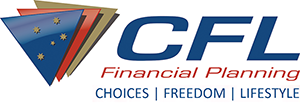Active management
The active management style of investing will try to beat the returns of the index to which it relates – known as its benchmark. The index contains the companies whose shares are being bought and sold daily by the fund. All equities belong to at least one index depending on the location of the company and the type of business.
In an active fund, the manager will pick stocks to buy and then compare the returns that they make against the benchmark. Good stock selection is designed to pick the companies that the fund manager thinks will outperform others within the index. The manager does not have to buy all the index stocks; only the ones that he or she thinks will rise the most in value, or in some cases, pay the best dividends, to give the best overall returns.
Passive management
The passive management style of investing – also known as tracking the index is called passive investing. Typically the fund will buy all the stocks in, for example, the S&P/ASX in the same proportion they represent in the index. So if Telstra accounts for 6% of the S&P/ASX 100 Index by value and a smaller company such as JB HiFi accounts for 1%, some 6% of fund by value will be in Telstra shares and 1% by value in JB HiFi and rebalancing will occur to ensure the fund is consistent with the index.
An Exchange Traded Fund (ETF) is a combination of the best features of conventional mutual funds and individual stocks. Generally speaking, an ETF represents a portfolio of securities (such as stocks, bonds or alternative assets), which aims to track the performance of a specific market index (like the S&P/ASX 100). An ETF is bought and sold on a stock exchange, like a share.
What are the key differences?
Active fund management means employing highly skilled managers who can spot the best opportunities. They are backed by resources such as researchers, databases and analyst reports in order to decide which equities have the best chance of outperforming.
Passively managed funds do not involve stock picking, since the equities will be chosen in direct proportion to the indices that they track. This can be done using computer programs, cutting down on the costs of management. They also do not need extensive research and consequently are cheaper to purchase than active funds.
Which style works best for me?
The style of fund you select in your portfolio should be carefully balanced towards your financial goals. Some investors are comfortable in selecting their own portfolio of funds. If you are unsure which funds to select for your portfolio, we recommend you seek financial guidance.
CFL’s Certified Financial Planners are experts in portfolio construction, so scroll down and click on the calendar to book a 15 minute focus call with an adviser.
Source: Blackrock






